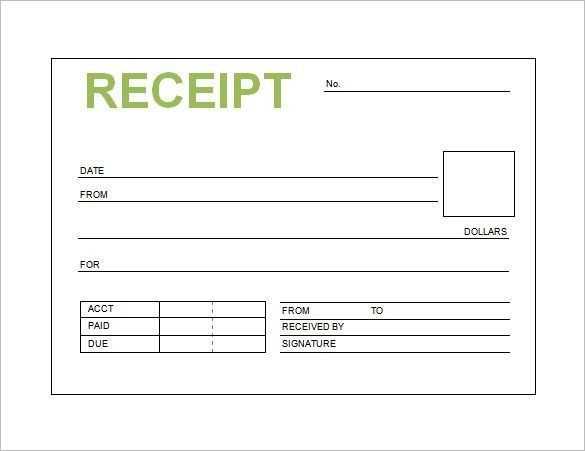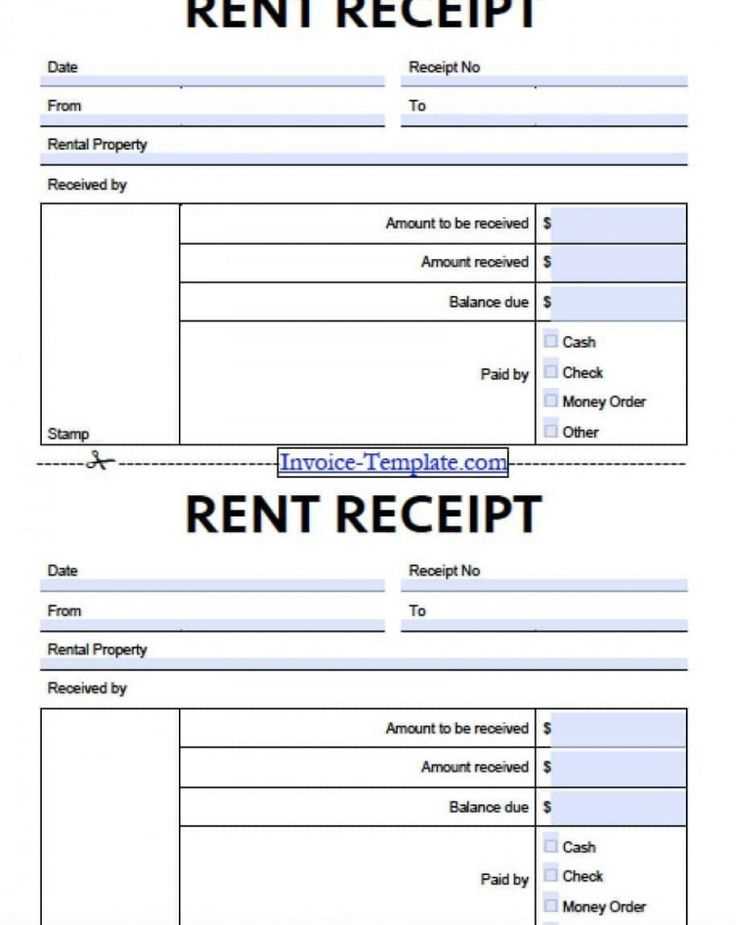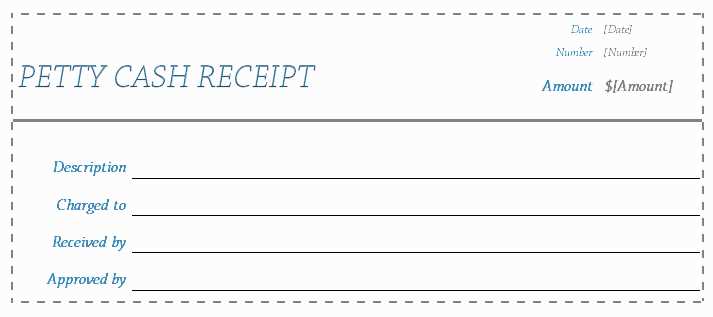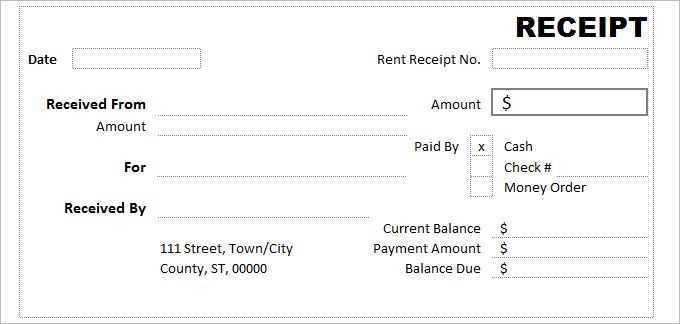
Key Elements of a Receipt Template
A receipt template must include several key elements to ensure clarity and provide all necessary information. Focus on the following points when designing or choosing a receipt template:
- Receipt Number: Unique identification for each transaction.
- Seller Information: Business name, address, contact number, and email.
- Buyer Information: Include customer name and, if applicable, contact details.
- Date and Time: Clearly state the date and time of the transaction.
- Itemized List: List of items or services purchased with their prices.
- Total Amount: Display the total cost clearly, including taxes if applicable.
- Payment Method: Indicate how the payment was made (cash, card, online transfer).
Designing the Template

The layout should prioritize legibility. Make use of sections to divide different categories, such as the seller’s information at the top, followed by the itemized list, and concluding with the total and payment details at the bottom. You can use different fonts and bolding for emphasis, but don’t overdo it–ensure that it remains easy to read. Keep the text size consistent for most parts, with slight emphasis on key information like totals.
Additional Considerations

- Logo or Branding: A small logo or branding at the top can make the receipt look more professional.
- Return Policy: It’s often useful to include a short line about return or exchange policy at the bottom.
- Barcode or QR Code: For electronic transactions or inventory tracking, adding a barcode or QR code could be helpful.
How to Use the Template
To use a receipt template effectively, simply input the necessary information for each transaction. Customize the template to fit your business style and needs–whether you need more space for a detailed description of items or a section for additional customer notes. Make sure the format remains consistent for each receipt issued, whether printed or emailed.
Having a well-organized template streamlines both the transaction process and future record keeping.
Template for Receipts
Selecting the Ideal Layout for Your Receipt Design
Incorporating Required Legal Information in Receipt Formats
Tailoring Receipt Templates for Various Payment Options
Enhancing Template Design for Print and Online Versions
Adding Invoice Numbers and Date Tracking in Receipts
Maintaining Data Privacy and Security in Digital Formats

Choose a clean, organized layout that clearly presents key information: the seller’s name, buyer’s details, date, amount, payment method, and itemized list. Utilize ample white space and readable fonts, ensuring each element stands out without crowding the page.
Selecting the Ideal Layout for Your Receipt Design

Keep the design simple with clear headings for each section. Align text in an easy-to-read format. Separate the transaction details from other information like contact details and payment methods to enhance clarity.
Incorporating Required Legal Information in Receipt Formats
Include legally mandated data such as the company’s tax ID number, return policy, and relevant disclaimers, depending on your location. Make sure that any mandatory information is included in a non-intrusive yet visible manner.
For businesses accepting multiple payment options, customize templates to accommodate credit card, cash, online transfers, and mobile payment details. Highlight payment method choices for clarity and make the receipt adaptable for different transactions.
Design with both print and online formats in mind. Ensure the layout is adjustable for mobile screens and easy-to-print versions. Consider reducing unnecessary elements in online formats while retaining all key information.
Invoice numbers and date tracking play a critical role in receipts for organization and reference. Include a unique invoice number, and place the transaction date prominently for easy identification and future reference.
For digital receipts, implement encryption and secure protocols to protect buyer information. Ensure that receipt formats comply with privacy regulations and consider using two-factor authentication for sensitive data.


